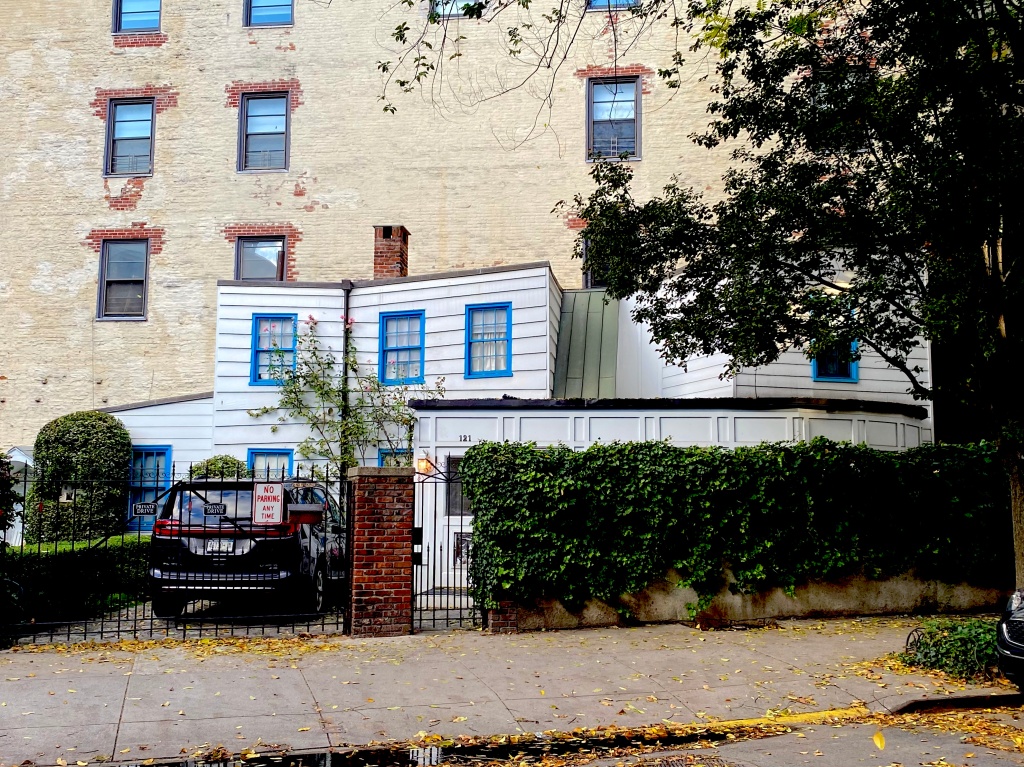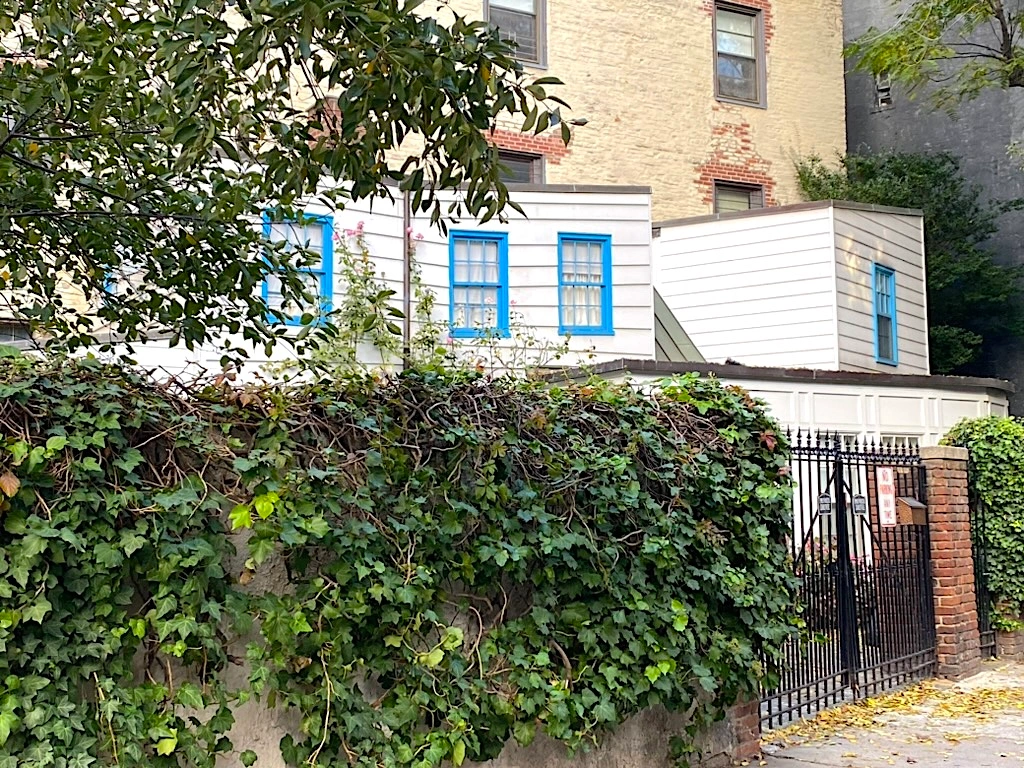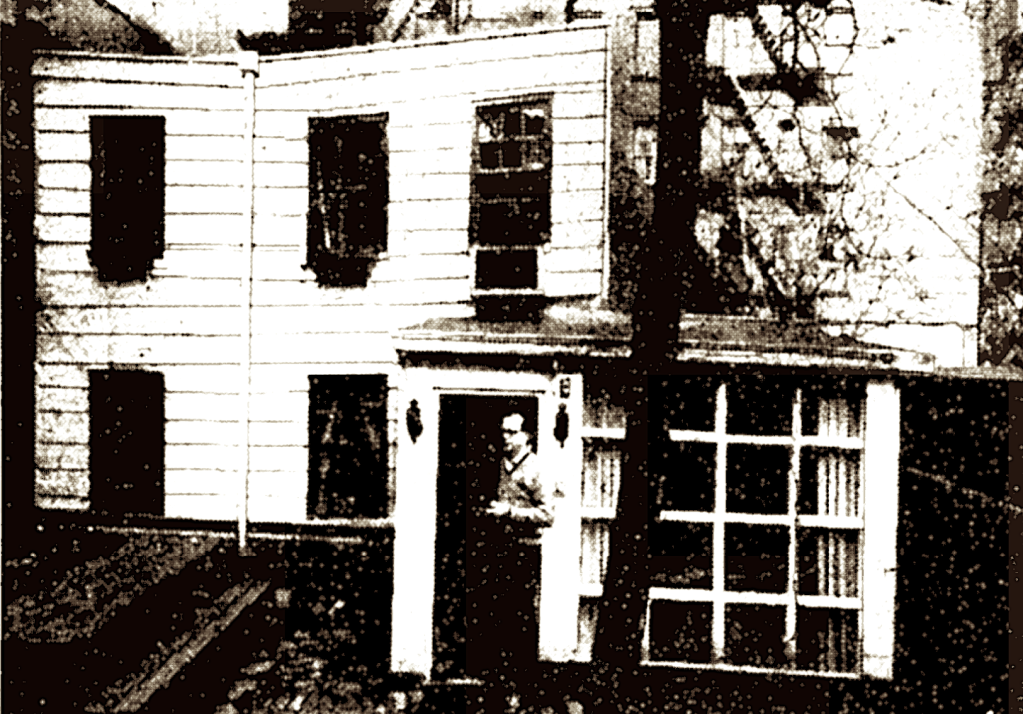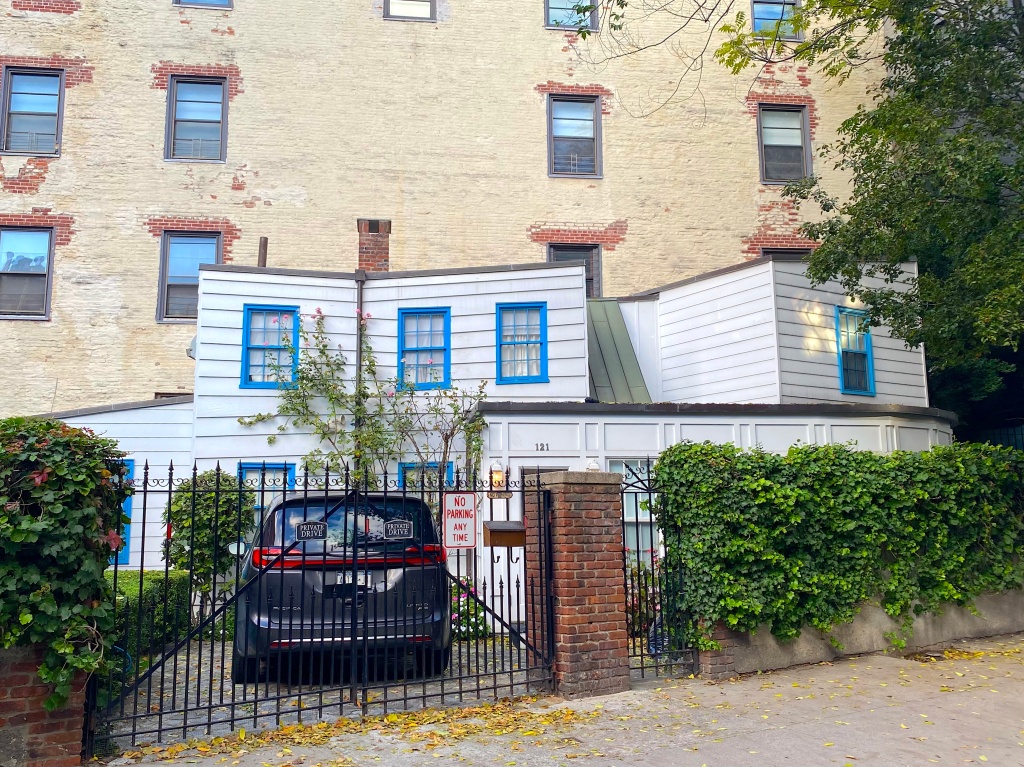The West Village is rich with historic houses—especially diminutive Federal-style survivors from the early 19th century and elegant brownstone rows constructed before and after the Civil War.
But this modest white clapboard farmhouse on Charles and Greenwich Streets might be the most intriguing of all. Every day, it attracts curious views from passersby—who peer through its iron fence and peek over the thick ivy walls to catch a glimpse of the antebellum city on a quiet West Village corner.
Dwarfed by its tall tenement neighbor, the tidy farmhouse (with a suburban-style driveway) resembles something out of a storybook: three small sections that kind of unfold like a book, two short stories, one slender brick chimney, and a roof that looks, well, a bit askew.
This New York relic has been at 121 Charles Street for more than 50 years, and its dollhouse-like presence delights and puzzles newer generations of West Villagers.
But like so many Village mysteries, the farmhouse has a fascinating backstory. This one began miles away in the Manhattan countryside and involves urban redevelopment, renters unwilling to part with of a beloved home, and a flatbed truck.
The farmhouse’s journey started in Yorkville roughly 200 years ago. At the time, Yorkville was a bucolic part of Manhattan dotted with farms and estate houses by the East River—connected to the main city only by the Boston Post Road (about today’s Third Avenue) and stage lines.
In this remote enclave, someone built the little farmhouse, putting in small paned windows and a staircase outside that connected the two floors, per a description from a 1966 New York Times article. Its location corresponded to today’s York Avenue between 71st and 72nd Streets.
Exactly when it went up isn’t known. “Saw marks found on the wood indicate that it was built after the introduction of saw mills, which would date the house to the early 19th century at the earliest,” states a post on Off the Grid, part of the website of historic preservation group Village Preservation.
In the 1860s, as Yorkville began losing its rural feel, the farmhouse was purchased by a man named William Glass, who with his wife ran a dairy inside.
The couple also built a two-story house in front of the farmhouse, 1335 York Avenue, thereby blocking it from view from the street. “The property became known as Cobble Court because of the cobblestones that paved the area between the two houses,” notes Village Preservation.
After spending time as a restaurant in the early 20th century, the farmhouse became a residential rental. In the 1940s, children’s book author Margaret Wise Brown (above, in a Life magazine photo) became the latest occupant. Perhaps living in a farmhouse walled behind another house helped inspire her most famous book, 1947’s Goodnight Moon.
In the 1960s, a man named Sven Bernhard (below), and later his wife, Ingrid, made their home in the farmhouse. “Time and various tenancies had dealt harshly with the two-story clapboard dwelling, and when Mr. Bernhard moved into it in 1960 it was virtually uninhabitable,” wrote Thomas W. Ennis in the 1966 New York Times article on this newly rediscovered “hidden house.”
“From 1960 to 1963, Mr. Bernhard, working alone, rehabilitated the dwelling, for which he is paying $65 in rent,” continued the 1966 Times article. The outside staircase was enclosed, per the article, and Bernhard added a glass porch.
This is where urban redevelopment makes its appearance. The Archdiocese of New York City now owned the farmhouse; it had been sold to them by descendants of the Glass family. The Archdiocese planned to raze a row of houses on York Avenue, including Number 1335 and the farmhouse behind it, to build the Mary Manning Walsh Home for the Aged.
“Still renters but unwilling to give up their beloved house, the Bernhards went to court and eventually won ownership around July 1966,” states Village Preservation. They had six months, until January 31, 1967, to move it elsewhere.” The lot at Charles and Greenwich Streets was found and secured.
After much bureaucratic wrangling with permits and permissions, the move took place in March 1967 (above). “The cobbles from the York Avenue site were brought here to recreate Cobble Court,” adds Village Preservation.
The Bernards stayed in their farmhouse until 1986. In 2001, another owner—who told The New York Times in a 2008 article that she’d “pined for the house” since she was a child in the late 1960s, when she “spotted it from the back of her parents’ station wagon”—took on a renovation. About 500 square feet was added, cedar planking restored, and new electric and plumbing put in.
In 2014, the farmhouse had a brush with potential demolition when the house was briefly put up for sale for $20 million. These days, this securely landmarked anachronism of rural New York City seems to have found its forever home.
[Fourth photo: Life magazine via Literary Hub; fifth photo: New York Times; sixth photo: Jack Manning/New York Times via Village Preservation]








